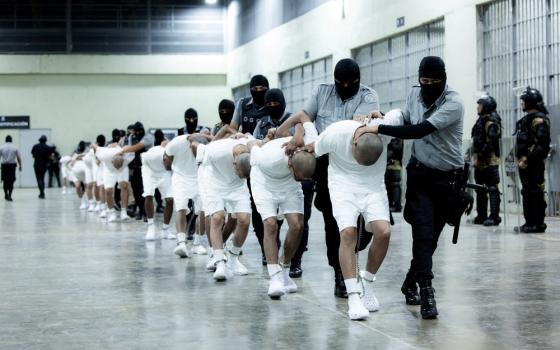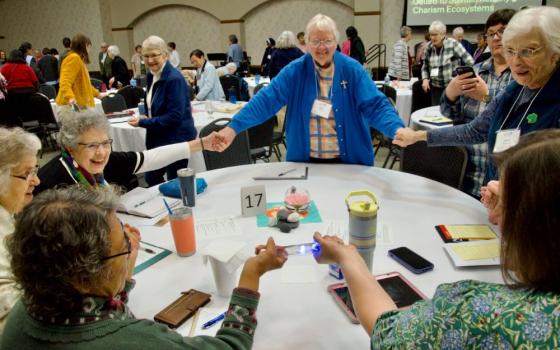In itself, news yesterday that a judge in Kentucky has allowed a lawsuit naming the Vatican as a defendant in a sex abuse case to proceed is not a thunderclap. A handful of lower courts have made similar rulings, but no American appeals court has ever upheld a challenge to the Holy See’s sovereign immunity, and most legal scholars believe it’s a long-shot this time around.
What’s more intriguing is the basis upon which U.S. District Judge John G. Heyburn II made his ruling. While he tossed out several arguments from the plaintiffs, he found they may be able to prove that Roman Catholic bishops are actually “agents” of the Vatican, and hence the Vatican may be liable under an exception to sovereign immunity if a bishop causes harm in the course of executing Vatican policy.
While previous lawsuits have attempted – always unsuccessfully – to argue that abuser priests were employees of the Vatican, this is apparently the first time the argument has pivoted upon the bishops.
All three plaintiffs in the Kentucky case grew up in the Louisville archdiocese. One, Michael Turner, was molested by Louis E. Miller, who was removed from the priesthood in 2004 by John Paul II after pleading guilty to sexually abusing Turner and other children in the 1970s. He is serving a 13-year prison sentence. The plaintiffs’ attorney, William McMurry, is seeking to have the case certified as a class-action lawsuit, which would allow other abuse victims to join. In 2003, McMurry represented 243 victims who settled with the archdiocese for $25.3 million.
To be clear, Heyburn has not found that bishops really are Vatican agents. Instead, he ruled that if the plaintiffs can show that there was a Vatican-ordered cover-up of sexual abuse by priests, and if the bishop in Lousiville was a Vatican agent, and if his enforcement of that policy caused harm to the plaintiffs, then they may be able to overcome the traditional barrier to suing a sovereign state.
Obviously, there are a lot of “ifs” in that sentence, and none of them has been legally established as a matter of fact.
By way of background, sovereign states have historically enjoyed more or less blanket immunity in one another’s courts. In the modern period, however, as states began to engage in a wide range of commercial activities, and as the presence of foreign agents on American soil expanded, exceptions began to crop up. To regularize the situation, the U.S. adopted the “Foreign Sovereign Immunities Act” of 1976, which reiterated the principle of immunity, but carved out two exceptions. Courts can hear cases against foreign governments under a “commercial activity” exception, such as a case in which a state-operated enterprise has defaulted on a contract or wrongfully deprived someone of their property. There’s also a “tort exception,” to cover a case in which an agent of a foreign state causes harm as a result of a policy or directive of that government.
Legal analysts say, however, that the Kenucky plaintiffs face a stiff challenge in trying to apply these exceptions to the Vatican.
First, they would have to show that the Vatican had a formal policy regarding the sexual abuse of minors by priests. The formal policy for Catholic priests, however, then and now, is celibacy. The shocking fact that many bishops, priests and laity looked the other way while clergy abused children is not the result of a Vatican edict, but rather the Catholic culture of the time, which put priests on a pedestal and preferred not to air the church’s dirty linen. The Vatican was as guilty as everyone else – probably more so than some – but not because there was a motu proprio to that effect. I’ve already written extensively on the Vatican document cited in the Kentucky case, Crimen Sollicitationis from 1962, but suffice it to say that the document was obscure, and in any event it dealt with the church’s internal disciplinary process. It said nothing on the question of what to tell police, courts, or child protection agencies, and therefore it’s difficult to use it to prove a “cover-up.”
Second, the plaintiffs would have to prove that all 4,500 Catholic bishops in the world are Vatican “agents.” Certainly, there’s an argument to be made – bishops are appointed by the pope, and only the pope, usually through the Congregation for Bishops, exercises any sort of “supervision.”
On the other hand, in ecclesiological terms, a bishop is not an “agent” of the Vatican, but rather the Vicar of Christ in his local church, successor to the apostles in his own right. In the 19th century, when Chancellor Bismark circulated an analysis stating that the teaching on papal primacy of the First Vatican Council had reduced local bishops precisely to “Vatican agents,” the German bishops protested. The pope’s “ordinary, immediate and universal jurisdiction” only meant, they wrote to Bismark, that the pope could intervene when the good of the local church required it, not that bishops had been deprived of their autonomy. Pope Pius IX officially confirmed the authenticity of their interpretation. In other words, should the defense lawyer in the Kentucky case decide to do so, he could produce a papal ruling specifically rebutting the claim that bishops are “agents” of the Holy See.
In American jurisprudence, someone is usually considered an “agent” of a foreign government if they’re on its payroll, which of course is not the case with bishops. Moreover, in normal Catholic argot, one refers to “Vatican officials” to mean members of the Roman Curia who report directly to the pope. In other words, for the normal Catholic, the Roman Curia is where one goes to find “Vatican agents,” not the local diocesan chancery. (Some may suspect their local bishop is more worried about the opinions of those Vatican officials than his own flock, but that’s a question of bureaucratic psychology, not formal policy).
Third and finally, plaintiffs would have to show that the Archbishop of Louisville, in making the decisions that ended up putting these three plaintiffs in harm’s way, was acting specifically on the basis of Crimen sollicitationis. Given that 99 bishops out of 100 had never heard of the document prior to press discussion of it in 2003, that’s something of a stretch. The documents most bishops did know about it – the Code of Canon Law, for example, or popular manuals of moral theology – certainly did not condone priests who abused their office.
For these reasons, most analysts think the plaintiffs are unlikely to prevail. Heyburn styled his ruling yesterday as “not final,” suggesting that perhaps he wants to hear additional arguments on the question of bishops as “Vatican agents” before he reaches a final conclusion. Thus it’s not clear if the next act of this drama will be played out before Heyburn, or a federal appeals court.
Despite the steep obstacles in American courts to overcoming immunity, it’s worth noting that the Vatican nevertheless takes this sort of thing seriously indeed. Back in February 2005, Cardinal Angelo Sodano raised the question of the Holy See’s immunity with Secretary of State Condoleeza Rice during a meeting at the Vatican, specifically asking that the State Department intervene in this very case in Kentucky. (In the past, the State Department has made representations to courts invoking the principle of sovereign immunity on behalf of foreign governments, including the Holy See).
Vatican officials are aware that four American dioceses have filed for bankruptcy under the weight of payouts related to sex abuse litigation: Portland, Ore.; Davenport, Iowa; Spokane, Wash.; and Tucson, Ariz. They have no wish to go down the same road.
To date, the wall of immunity has held up. As with floods and hurricanes, however, the problem with lawsuits is that it only take one disaster to produce a world of hurt.




